Roku's $30 'Express' is no Chromecast killer - here's why
But first, the good. The Express has the exact same interface as any other Roku, which means it’s dead simple to navigate.

All those apps are complemented by a nifty search function.
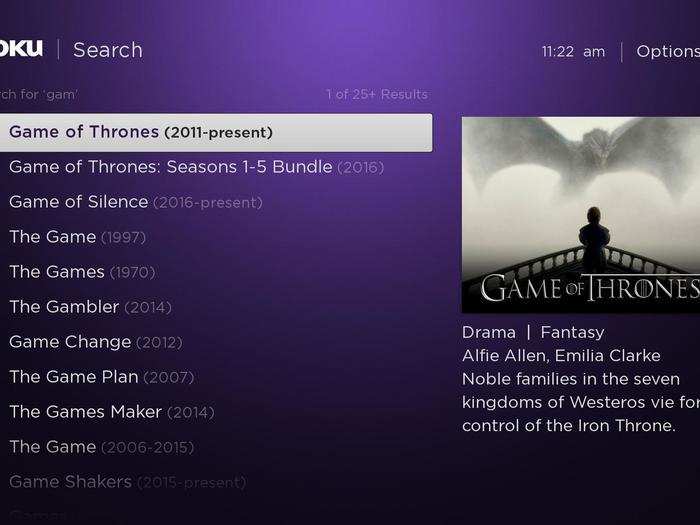
Roku has always had the advantage of not having a dog in the content fight — unlike Amazon, Apple, and Google, it has no platform for selling video. That means it has no incentive to push one service ahead of the others in search results.
Though its competitors (namely Amazon) have gotten better about this in recent months, Roku still takes the widest range of apps into account, is still agnostic about displaying them, and still lists your most affordable options first, which is helpful. It’s far from bulletproof — searching for “The Simpsons” somehow failed to bring up an FXNow link, even though that’s home to literally every episode — but generally speaking it’s a plus.
Roku’s companion app is useful as well.
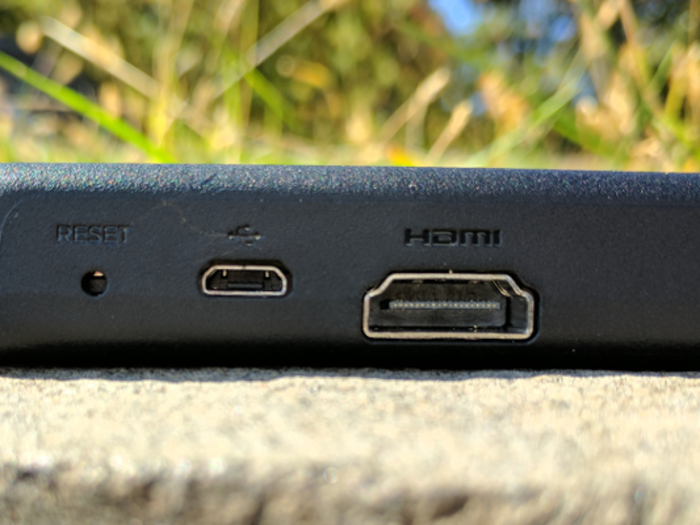
Roku's companion app more or less recreates the entire Roku OS on your phone, then adds a virtual WiFi remote, and a voice search function. The latter works, though it’s clearly clunkier than talking to an assistant like Siri or Alexa. Still, I’d rather have it than not.
The app also supports a “private listening” mode, which lets you hook up a pair of headphones and funnel the volume through there. Again, this isn’t perfect — there’s a flaw that cuts off the audio if you connect your headphones after a stream has started, and using Bluetooth headphones consistently causes audio and video to desync. With a wired pair, though, it’s easy to appreciate.
These are all things you could get with any Roku, though. What separates the Express is its price and its hardware. Time and again, saving on the former isn’t worth dealing with the latter.
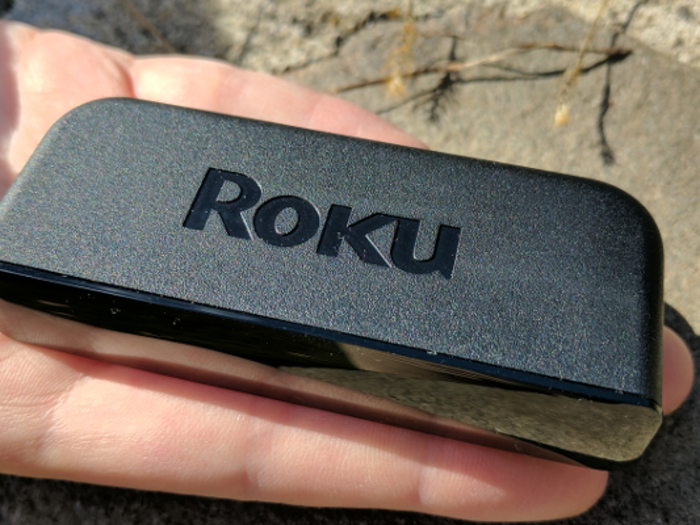
First and foremost, the Express is just plain slow. Roku says the Express’ processor is twice as fast as that of the old Roku 1, but that doesn’t mean much: There’s a persistent lag to everything you do, which sways from “aggravating” to “unusable” depending on where you are.
Loading the main menu takes a bit longer than it should, for instance, and you often have to wait a second a two between clicking on an app and seeing that click register. That’s annoying.
Once you open some of those apps, things can get troubling. Netflix and YouTube, for instance, are complete disasters. They can play videos, but that’s about the best thing you can say about them. The input delays are severe, audio cues might play several seconds after a button is pressed, and fast forwarding is too much for the processor to handle.
Many times, trying to do anything more than pause a video will cause it to freeze entirely, forcing you to back out to the main menu. Other times, Netflix (and others, like HBO Go) will suffer a strange glitch that makes audio sound overly processed. They’re a mess.
It’s worth pointing out that most of the apps with major issues do not borrow Roku’s design elements. YouTube looks like it does anywhere else.
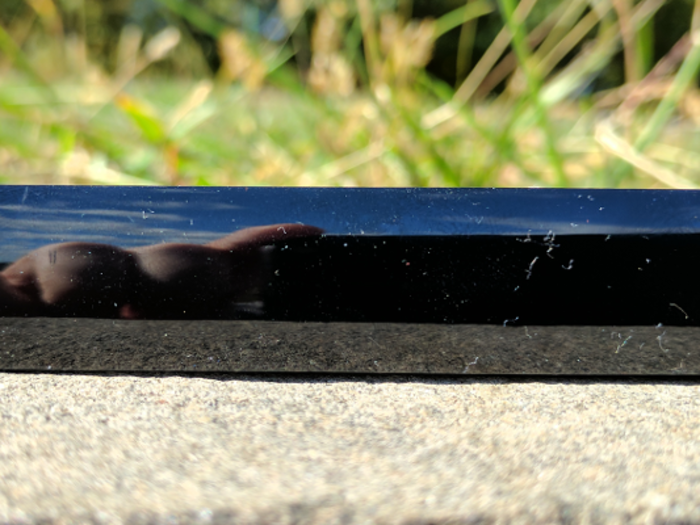
Others like Twitch or PlayStation Vue do adopt the “Roku look,” and run a little bit smoother. That said, they’re not fast, and they look boring by comparison. This is a conflict that shouldn’t exist. An ultra-affordable streamer doesn’t have to be blazing quick, but it shouldn’t make you slow down so it can keep up. That’s what happens here.
An aside: For all the good Roku’s OS does, it’s getting a bit long in the tooth.

Visually, it’s bland. It’s also incapable of suspending apps in the background, like, say, Android TV. Once you go back to the main menu, you close an app completely. The software is still the best thing about any Roku device, but a makeover really wouldn’t hurt.
In any case, the rest of the Express’ hardware is barebones.
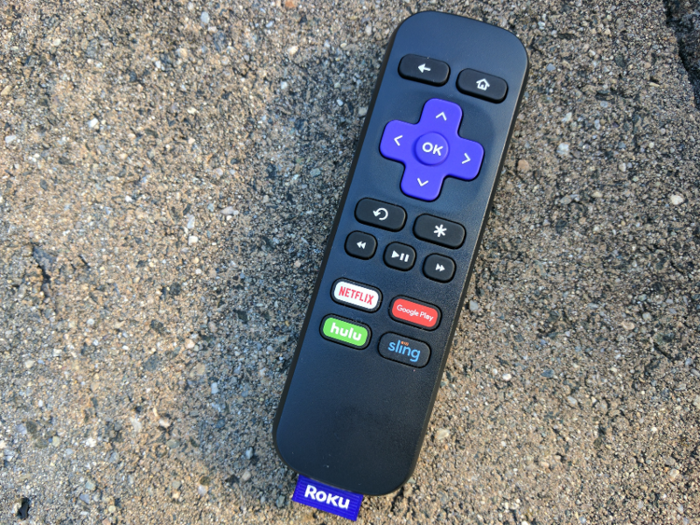
It uses last-gen 802.11n WiFi, and isn’t dual-band, meaning you’re stuck on the crowded 2.4GHz band instead of the faster 5GHz one. There are no ports beyond a single HDMI connector, so don’t expect anywhere to plug in a microSD card and play local media. (Though you can beam photos and videos from your phone using the Roku app.) It maxes at a 1080p resolution, too — there’s no ultra high-res 4K here, nor is there HDR support.
The low price can at least justify all of that, though. More aggravating is the remote, which is easy enough to handle, but uses infrared. That means it needs a direct line of sight to work. This is bad! Roku’s solution is to pack a strip of adhesive in the box, which you can use to stick the Express to a TV. The first time I tried this, it fell off my TV within two minutes.
It doesn’t help that the included HDMI cable is only two feet long. If you can’t get the device in a good spot, I’d stick to the app.
Really, though, I’d buy a different streamer. The Roku Express is more “cheap” than “affordable.”

Though the Roku Express has the makings of a “Chromecast killer” on paper, having a self-contained interface isn’t worth the extra $5 it costs to get Google’s dongle. If you’re looking to pay as little as possible for a good streamer, that’s the pick. It’s smoother across the board. (Though, for $40, Amazon’s new Fire TV Stick looks promising as well.)
If you can bump your budget by just a little bit more, though, the $50 Roku Streaming Stick remains the best value on the market. It has the same helpful OS as the Express, but pairs it with hardware that can actually handle the load. If you don’t need 4K or HDR, buy that.
Popular Right Now
Popular Keywords
- India’s wearables market decline
- Vivo V40 Pro vs OnePlus 12R
- Nothing Phone (2a) Plus vs OnePlus Nord 4
- Upcoming smartphones launching in August
- Nothing Phone (2a) review
- Current Location in Google
- Hide Whatsapp Messages
- Phone is hacked or not
- Whatsapp Deleted Messages
- Download photos from Whatsapp
- Instagram Messages
- How to lock facebook profile
- Android 14
- Unfollowed on Instagram
Advertisement